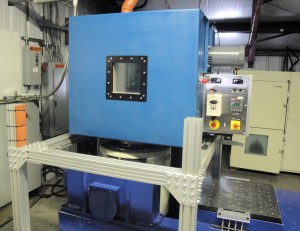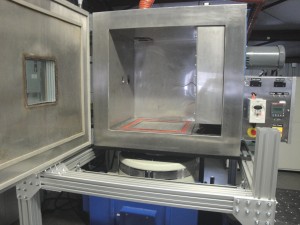
 DES added another larger AGREE Chamber to perform Combined Temperature and Vibration Testing. This gives DES additional capability to perform combined environmental testing on larger products. DES has performed Combined Temperature and Vibration Testing on car engine sensors, helicopter sensors and outdoor heavy industrial products. Some of the test specifications include MIL-STD-810 and General Motors GMW 3172.
DES added another larger AGREE Chamber to perform Combined Temperature and Vibration Testing. This gives DES additional capability to perform combined environmental testing on larger products. DES has performed Combined Temperature and Vibration Testing on car engine sensors, helicopter sensors and outdoor heavy industrial products. Some of the test specifications include MIL-STD-810 and General Motors GMW 3172.
The Equipment Capabilities Are:
- Combined shock or sinusoidal, random, mixed mode vibration and temperature
- Temperature range from -80°C to +180°C (-112°F to +356°F)
- Temperature rate of change up to 20°C/minute
- 9 cubic feet interior work space, cvo
To learn more about our combined temperature and vibration testing services, visit our website, and be sure to contact us if you would like to find out how our services can work for your products.